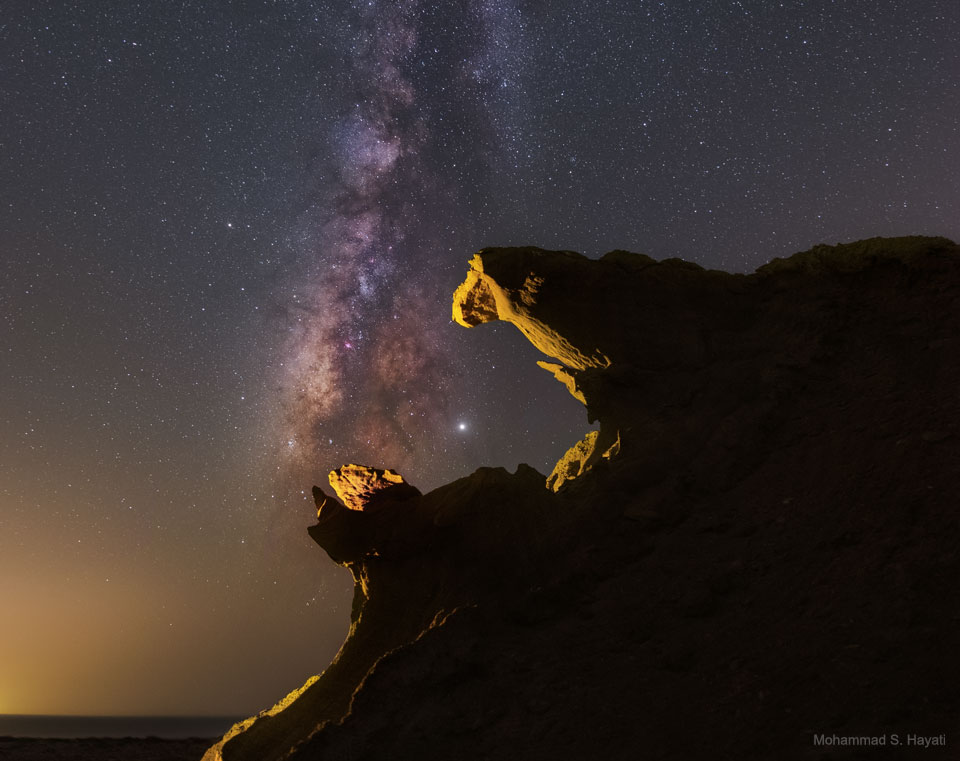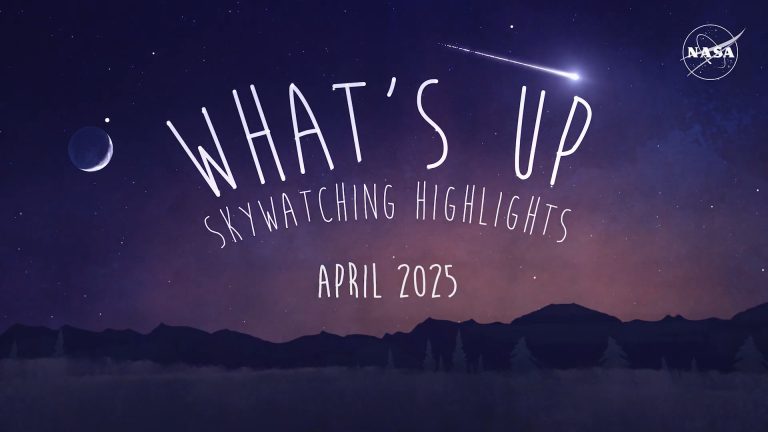2019 August 7
Jupiter Engulfed and the Milky Way
Image Credit & Copyright: Mohammad S. Hayati
Explanation: This is a good month to see Jupiter. To find our Solar System’s largest planet in your sky, look toward the southeast just after sunset — Jupiter should be the brightest object in that part of the sky. If you have a binoculars or a small telescope, you should be able to see Jupiter’s four brightest moons right nearby, and possibly some cloud bands. The featured image was taken about a month ago from the Persian Gulf. The image shows Jupiter just to the right of the nearly vertical band of the central disk of our Milky Way Galaxy. The unnamed rock formations appear in projection like the jaws of a giant monster ready to engulf the Jovian giant. When you see Jupiter, it may be interesting to know that NASA’s robotic Juno spacecraft is simultaneously visiting and studying the giant planet. Saturn is also visible this month, and although it is nearby to Jupiter, it is not as bright.
虎口里的木星和银河
影像提供与版权: Mohammad S. Hayati
说明: 这是观赏木星的好月份。在天空中,想找这颗太阳系最大的行星,请在刚日落后往东南方望,木星应是该方向天空最明亮的天体。如你拥有双筒或小望远镜,你应能在木星附近见到它最亮的四颗卫星,或许也可见到数道云带。上面这幅主题影像,大约是在一个月前摄于波斯湾。其中,木星位在几乎垂直的银河系中央盘面之右缘。而那团无名的岩块,侧看酷似即将吞噬木星的庞大怪兽之血盆大口。当你观赏木星时,别忘了美国航太总署的朱诺号太空船,目前在绕行和探索这颗巨行星。土星是另一颗这个月可见的天体,不过位在木星附近的土星没那么亮。







